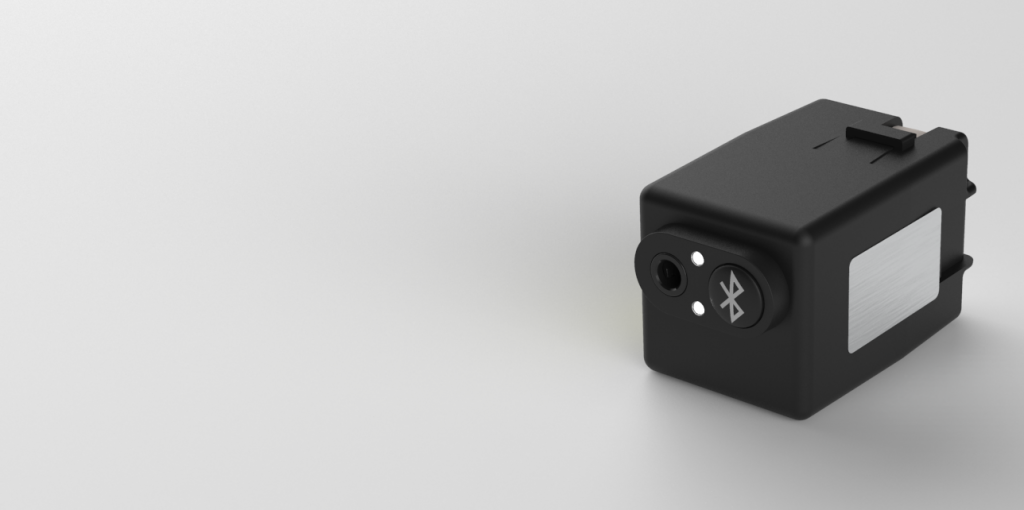Wireless audio is far from a passing trend. So how can airlines accommodate passengers fed up of restrictive cables, without alienating those choosing to stick with wired headphones? We explore the basics of in-flight Bluetooth audio and how operators can use the technology to enhance their in-flight entertainment offering.
Let’s start with the basics – what is Bluetooth?
Simply put, Bluetooth is a wireless technology that allows the exchange of information between devices. It allows users to transfer data like files, music, and other information without the need for wires. In headset terms, Bluetooth allows users to listen to audio through headphones without the need for wires.
Is Bluetooth a new idea?
No, absolutely not. The Bluetooth Special Interest Group (the Bluetooth SIG) actually introduced Bluetooth® to the market in 1998 as a completely wireless solution to data transfer. According to Jim Kardach, co-founder of the Bluetooth SIG, the name of this technology was taken from the 10th Century second King of Denmark, King Harald Blåtand. King Blåtand (which translates to ‘Bluetooth’ in English) was renowned for having united Scandinavia, and the creators of Bluetooth technology saw a parallel between this chivalrous character and their intention to unite the PC and cellular industries with a new wireless means of data transfer.
How does Bluetooth actually work?
Bluetooth uses ultra-high frequency (UHF) radio waves (the same range of frequencies as Wi-Fi) to transmit information over short distances. Bluetooth devices ‘hop’ between these electromagnetic waves, constantly switching between different frequencies hundreds of times a second.
Bluetooth is generally considered very secure and safe against hacking due to changing between different frequencies very quickly – usually known as ‘frequency hopping spread spectrum’ (FHSS). The technology tweaks this principle slightly, using ‘adaptive frequency-hopping spread spectrum’ (AFH) and regularly changing the ‘hopping’ sequence, which further lessens the likelihood of the Bluetooth signal being interfered with by other radio frequencies.
Most Bluetooth devices have a maximum range of around thirty feet, which is further reduced if any obstacles are in the way.
How does Bluetooth technology work for audio?
Bluetooth headphones work in much the same way as headphones with a wired connection. Both types of headsets convert electrical energy into sound waves that a user will hear as music or other audio. However, rather than receiving an electrical signal through a wire, Bluetooth headsets connect to a wireless transmitter that broadcasts the electrical signal to the headset via radio waves. The Bluetooth headset then converts the wireless electrical signal into sound energy that can be heard through the headphones.
Why are passengers choosing to use Bluetooth headphones?
Bluetooth headphones have some great advantages, particularly for travellers.
For one, there are no wires to spend swathes of time untangling. No wires also means the potential for accidentally tugging headphone cables and damaging – or even breaking – them is eliminated. Wireless headsets are usually compact and lightweight, with some products even designed to fold to make them easier to carry around and, for aircraft passengers, easier to fit in their carry-on luggage.
However, Bluetooth headsets are generally more expensive than traditional headphones. They are also more costly and difficult to fix or replace if something goes wrong, which can be off-putting for customers.
How can airlines cater to passengers that use Bluetooth headphones, and those that don’t?
There is no doubt that Bluetooth headphones are continuing to rise in popularity, particularly among passengers who travel frequently. But, not every passenger will own a wireless headset and the cost of supplying each passenger with Bluetooth headphones could be prohibitive for airlines.
Luckily, catering to passengers with their own Bluetooth headphones doesn’t have to be at the exclusion of those customers who prefer to use wired headsets. Airlines need only install one audio jack to keep all passengers happily entertained.
Our Bluetooth® Audio Jack 2082 (pictured below) which includes a 3.5 mm audio jack alongside wireless Bluetooth capability, allowing every passenger to connect to great quality in-flight entertainment.
To find out more about our Bluetooth® Audio Jack 2082 please get in touch or download the product datasheet.


